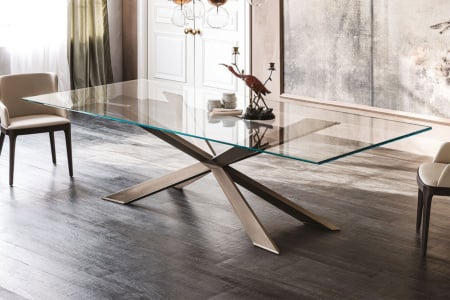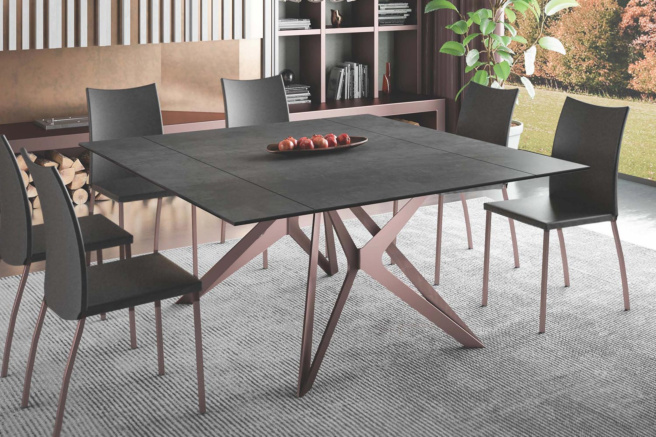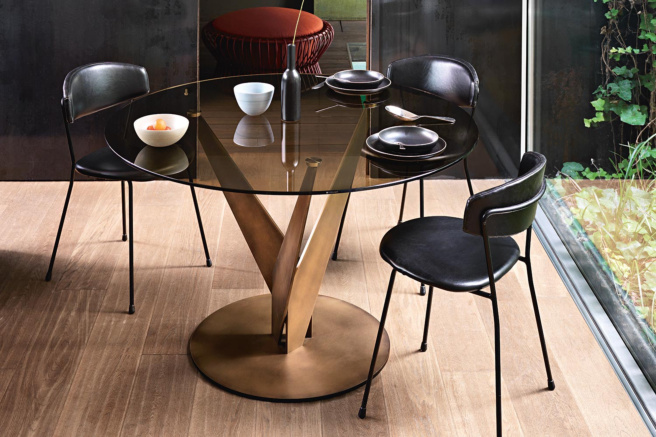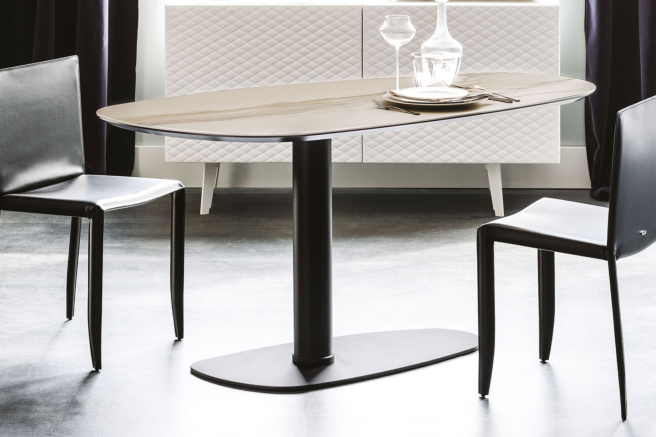Choosing the Perfect Dining Table for a Stylish Culinary Space
Choosing a dining table might be one of the most important tasks when it comes to room design. It's not only the final touch; it's the thing that can enhance the dining experience for years to come. There are a few basic things that you need to keep in mind when looking for your perfect kitchen table: the size, shape, and material.
Size
Understanding the maximum appropriate size is the first step in the process. You want enough clearance space to ensure ease of movement, so that's a solid start. Remember to have at least 3 feet between the table and any surrounding furniture or walls. All you need to do is measure your dining space and subtract 6 feet from the width and length to accommodate the 3-foot clearance on all sides. By the end of these calculations, you will know the maximum recommended size for your table.
Shape
There are four main categories to choose from: rectangular, square, round, and oval.
Rectangular tables are a good option for a spacious room to seat the entire family or host a dinner party. You'll have enough room for serveware and dishes, and there is always an opportunity to fit more people as the expensive area of the modern kitchen table allows for this maneuver. But at the same time, you can lose the intimate feel and ability to interact with everyone at the table.


Square tables are perfect for minimalist and modern dining spaces. They offer an intimate dining experience, fit well in small areas, and create a sense of symmetry. However, what works for small groups of people may not work for big gatherings, so you need to consider your usual number of guests to see if it's a good option for you.
Round tables are great for maximizing floor space and allowing for smooth movement. Like square tables, they foster intimate conversations and create a cozy atmosphere, and as a bonus, everyone can reach the middle of the table. The absence of angles makes it hard to bump into the table, and you can place more people if there is such a need.


Oval tables are a blend of rectangular and round tables. They are great for smaller dining rooms and apartments. The rounded edges create an illusion of more space while you have enough area for your family members and guests. As it doesn't define space as rectangular, it adds a softer touch to the room.
Material
Equally important is the table's material, which impacts both durability and aesthetic appeal. The most popular materials are solid wood, glass, marble, and metal:
- Solid wooden dining tables are versatile and timeless. They blend seamlessly with a variety of decor styles and can last for generations with proper care. However, despite their renowned durability, they are still susceptible to scratches and water damage, requiring regular care and proper polishing to preserve their beautiful appearance.
- Some modern kitchen tables are made of glass. They create a sleek appearance and add an element of elegance to any space while being easy to maintain, making them ideal for busy households. Glass tables can also create a sense of openness as well as make the area look more spacious. This option is perfect for smaller dining areas. However, they need to be properly tempered, especially in homes with young children.
- Marble tables exude sophistication and luxury. With their unique patterns, they add a touch of elegance and beauty to the space. However, these tables are heavy and expensive, making them less practical for some households. This material also requires regular sealing and maintenance to preserve its pristine appearance.
- Metal tables are strongly associated with an industrial-chic aesthetic. Unlike our previous options, this one is incredibly durable and easy to clean. Metal tables can withstand heat and moisture, which makes them suitable for outdoor areas and ideal for high-traffic areas. The only thing you need to remember is that metal absorbs heat, so consider this before serving hot meals or directly placing them on the surface.
You can finally focus on the design and style when all the above points are clear. It is best to opt for aesthetics that reflect your personal taste. Your kitchen table should complement already existing furnishings and decor if you want to achieve a harmonious and cohesive look. Standard design options range from live-edge and rustic farmhouses to industrial, offering various styles.
Conclusion
Selecting the right design and style of a modern kitchen table is your opportunity to express yourself and create an atmosphere that feels right for you. It's not just about aesthetic appeal, even though that is important — it is all about experiences that are yet to be lived in this exact place. The goal is to enhance those experiences through the practicality and appearance of your dining space.